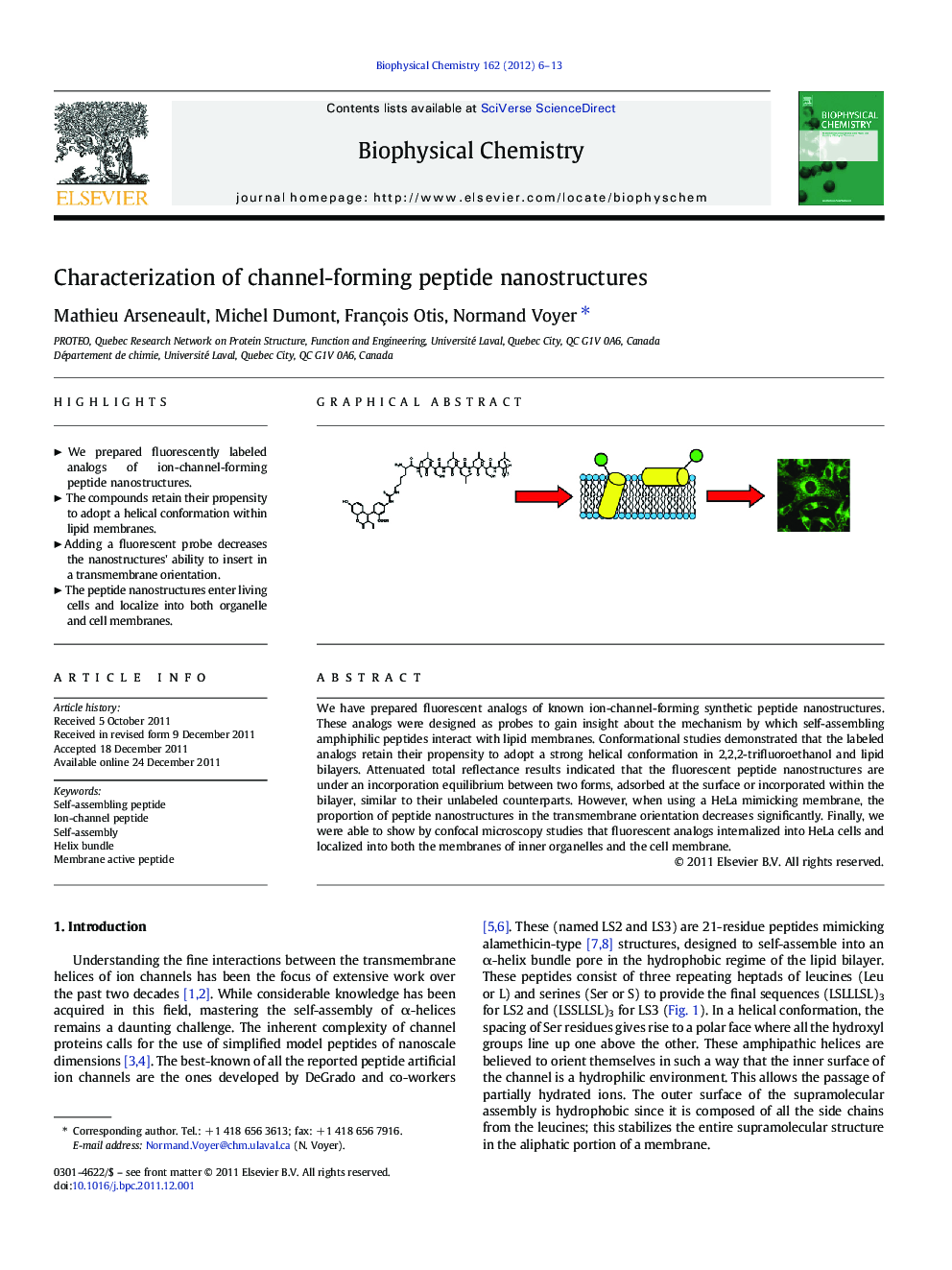| Article ID | Journal | Published Year | Pages | File Type |
|---|---|---|---|---|
| 5371263 | Biophysical Chemistry | 2012 | 8 Pages |
We have prepared fluorescent analogs of known ion-channel-forming synthetic peptide nanostructures. These analogs were designed as probes to gain insight about the mechanism by which self-assembling amphiphilic peptides interact with lipid membranes. Conformational studies demonstrated that the labeled analogs retain their propensity to adopt a strong helical conformation in 2,2,2-trifluoroethanol and lipid bilayers. Attenuated total reflectance results indicated that the fluorescent peptide nanostructures are under an incorporation equilibrium between two forms, adsorbed at the surface or incorporated within the bilayer, similar to their unlabeled counterparts. However, when using a HeLa mimicking membrane, the proportion of peptide nanostructures in the transmembrane orientation decreases significantly. Finally, we were able to show by confocal microscopy studies that fluorescent analogs internalized into HeLa cells and localized into both the membranes of inner organelles and the cell membrane.
Graphical abstractDownload full-size imageHighlights⺠We prepared fluorescently labeled analogs of ion-channel-forming peptide nanostructures. ⺠The compounds retain their propensity to adopt a helical conformation within lipid membranes. ⺠Adding a fluorescent probe decreases the nanostructures' ability to insert in a transmembrane orientation. ⺠The peptide nanostructures enter living cells and localize into both organelle and cell membranes.
